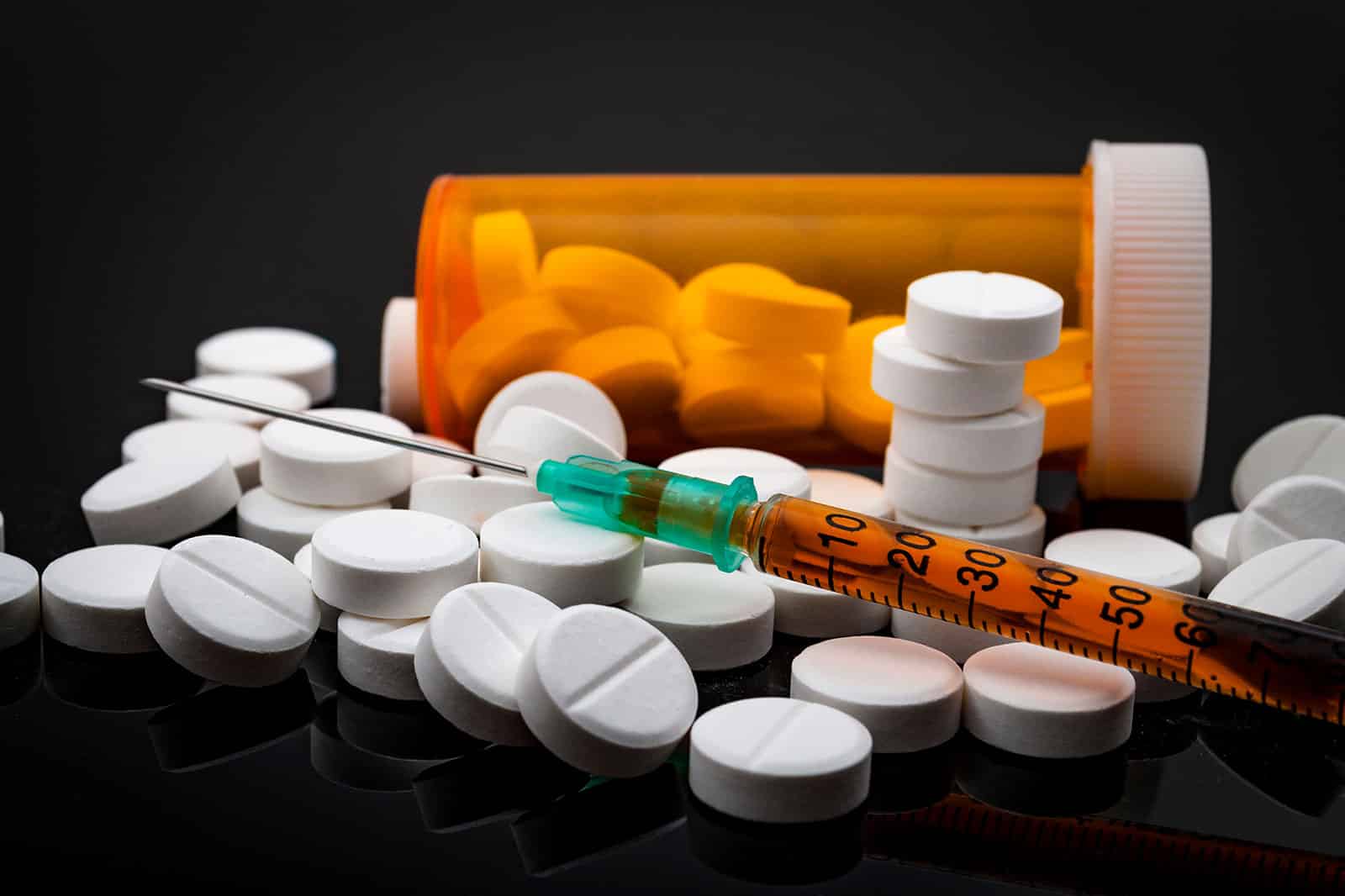Knowing how opioids affect the body can help someone who suffers from opiate addiction safely find the treatment they need to get sober. As soon as opioids enter the bloodstream, they start to metabolize. The amount of time they stay in the body can vary based on a variety of factors, which we’ll discuss below.
Overview of Opiates and Their Uses
Opiates are naturally derived alkaloids that come from the poppy straw of the opium poppy, Papaver somniferum. Morphine and codeine are two of the psychoactive opiates found in the opium plant, known for their pain-relieving properties. Doctors have used these painkillers for centuries to manage severe pain and induce sleep. Today, opiate use is heavily regulated due to its high potential for addiction and abuse, especially in cases of chronic pain where long-term use can lead to dependence.
Understanding how long opiates stay in the system is crucial, especially if you are seeking treatment that includes detoxification or if you are undergoing a drug test. Knowing how factors like age, weight, health, and metabolism affect how your body processes these drugs can help you safely navigate pain management or seek help for addiction recovery.
How the Body Processes Opiates
When people inject, ingest, smoke, or snort opiates, the body metabolizes the drugs and changes them into different chemical compounds. Once an opiate enters the bloodstream, it travels to the liver. Here, enzymes break down the drug into smaller components called metabolites, which enter the systemic circulation and pass into the body’s tissues. Depending on the opiate in question, these metabolites could be inactive or active. A person’s metabolic rate plays a key role in determining the amount of time it will take for opiates to be excreted in urine and leave the body.
Many factors can influence the amount of time opiates stay in the body, including a person’s age, body mass index (BMI), and metabolism. The opiate‘s type, dose, and frequency of consumption can affect its half-life, which describes the amount of time it takes for the body to eliminate half the drug. Enzymes can also affect how opiates interact with other drugs or chemicals in food and impact their overall effect. Other factors, including a person’s liver and kidney function, hydration levels, and genetics, can influence how long opiates may linger in the body.
Detection Times for Different Opiates
The amount of time a drug stays in the body correlates to its detection time, which describes the length of time it will be possible for a drug test to return a positive result. This timeframe can vary depending on factors like the frequency of use and the type of drug test administered, such as urine, blood, hair, or saliva tests. The following list includes some common detection windows for different opiates and opioids, providing a general idea of how long these substances can be detected in the body.
Urine Test
The detection windows below show how long certain opiates and opioids tend to be traceable in urine after their last use:
- Codeine: up to 3 days
- Fentanyl: up to 3 days
- Heroin: less than 1 day
- Morphine: up to 3 days
- Hydrocodone: up to 3 days
- Oxycodone: up to 3 days
- Tramadol: up to 4 days
Blood Test
Opiates and opioids leave the blood more quickly than they leave urine. These detection windows describe how long certain opiates and opioids may stay in the blood:
- Codeine: up to 4 hours
- Fentanyl: up to 12 hours
- Heroin: less than 15 minutes
- Morphine: up to 7 hours
- Hydrocodone: up to 3 days
- Oxycodone: up to 6 hours
- Tramadol: up to 24 hours/ 1 day
Hair and Saliva Tests
Hair tests can detect most opiates for up to 90 days after use, while saliva tests can detect opiates for 1 to 4 days after use. Using these testing methods, Tramadol can be detected in a hair follicle for 4 to 7 months after its last use.
Factors That Influence Opiate Elimination
The time it takes for the body to eliminate opiates can vary from person to person, which means that opiates are not always detectable for the same amount of time. Body mass and weight, hydration levels, and liver function can all affect the amount of time a given drug test can detect the presence of opiates.
Body Mass
Researchers believe that as opiates travel through bodies with a larger mass, they may have a more difficult time reaching effective levels. The extra weight or fat a person carries may alter an opiate’s distribution throughout the body and cause it to remain in their tissues for a longer period of time. Slow or differing metabolic processes may also increase the amount of time it takes for drugs to leave the body.
Hydration
Hydration levels can affect the body’s ability to eliminate opiates by influencing kidney function and excretion. When a person is well-hydrated, their kidneys tend to be more efficient at filtering opiates and their metabolites, which means that they will leave the body more quickly and potentially reduce the detection time. Dehydration can cause opiates to stay in the body longer, which can lengthen the detection window.
Liver Function
Opiate metabolization begins in the liver, and a healthy liver will process the drug more effectively. If enzymatic activity within this organ is impaired, opioids may stay in a person’s system for a longer period of time. This means that any liver damage or disease that impairs liver function can increase the detection period for opiates.
Why Do Some People Metabolize Opiates More Quickly or Slowly Than Others?
People metabolize opiates at different rates. After taking the same dose of an opiate, “fast metabolizers” and “slow metabolizers” may show different amounts of the substance in their system and react to opiates differently. For instance, since fast metabolizers break down opiates more quickly, they may not get full pain relief from a standard dose of opiates. Slow metabolizers may suffer from more side effects from a standard dose of opiates if the drug lingers in their system.
Since metabolism also tends to get slower as people age, older people may process opiates less quickly. Medical conditions like kidney disease can impact opiate metabolism. Genetic variations and drug interactions can also affect how enzymes like cytochrome P450 (CYP) and CYP2D6 break down opiates, which can affect the rate of opiate metabolism.
Why It’s Important to Seek Help for Opiate Addiction
While opiates belong to a class of drugs with legitimate medical applications, prolonged drug use carries serious risks, including dependence and addiction. Up to 25% of prescription drug users struggle with opioid addiction. Long-term opiate use can lead to tolerance, cravings, and withdrawal symptoms when the drug leaves the body. Left untreated, substance abuse related to opioids can result in risky behaviors, legal problems, accidental overdose, and even death.
People who seek treatment for substance use disorders can receive the support they need to overcome dependency and improve their health. In many cases, medications can help ease cravings, making it easier to abstain from the drugs. Counseling, therapy, and medical supervision work together to reduce the effects of addiction, allowing people to learn how to live normally and happily without opiates.
If you or someone you care about is struggling with opiate addiction, it’s important to seek professional help. With the right treatment, the addiction potential of opiates can be managed, and the disorder can become a thing of the past.
Treatment Options at Live Free Recovery
Live Free Recovery Services offers caring, compassionate support to help people who suffer from opiate addiction. Since each person’s circumstances are unique, we provide tailored treatment plans that encourage the best possible outcomes. Clients may receive a combination of evidence-based and holistic therapy and treatments, guided by experienced healthcare professionals, to support lasting recovery. Our innovative programs for opiate use disorder include:
Inpatient Care
When opiate use is severe enough to damage personal relationships, mental health, or career prospects, our inpatient treatment center may be the best option. Short- or long-term inpatient opiate rehab programs provide around-the-clock support and teach people to build resilience and coping skills in a safe, comfortable, residential setting. Patients often combine holistic therapies like exercise, yoga, and meditation with evidence-based therapies to complement the recovery process.
Day Treatment
Day treatment, also known as a partial hospitalization program, offers the intensive level of care provided by our inpatient programs while allowing patients to recover at home. These opiate treatment programs may involve therapy sessions during the morning and afternoon up to five days a week. This option is ideal for those who need a highly structured treatment facility but do not require 24-hour medical supervision.
Outpatient Drug Treatment
Outpatient opiate rehab programs are designed to work around clients’ schedules without disrupting their daily lives. These treatment sessions are typically held during the day or evening, offering less intensive care for those who remain fairly in control of their lives and have not experienced the more severe consequences of dependency. This option allows individuals to continue their recovery journey with the support of their loved ones and daily routines.
At Live Free Recovery, our healthcare team is dedicated to supporting each individual’s journey to wellness, ensuring personalized care in a compassionate and professional environment.
Find Relief From Opiate Addiction at Live Free Recovery
Anyone who seeks treatment for opiate addiction at Live Free Recovery can benefit from our comprehensive approach to recovery. Our caring experts work to heal each client’s body and spirit so they can regain their physical and emotional health. By combining tested evidence-based practices like medication-assisted treatments (MAT) and cognitive behavioral therapy (CBT) with holistic treatments, we help put patients on the path to long-term sobriety and wellness. Our traditional opiate addiction treatments can help curb withdrawal symptoms, ease the strain of detox, and help prevent relapse, while our creative therapies give patients a healthy outlet for emotional expression and enhance quality of life. We address the root cause of opiate addiction to help our patients achieve lasting sobriety so they can live fulfilling lives. To learn more about our treatment programs, visit our website today.


